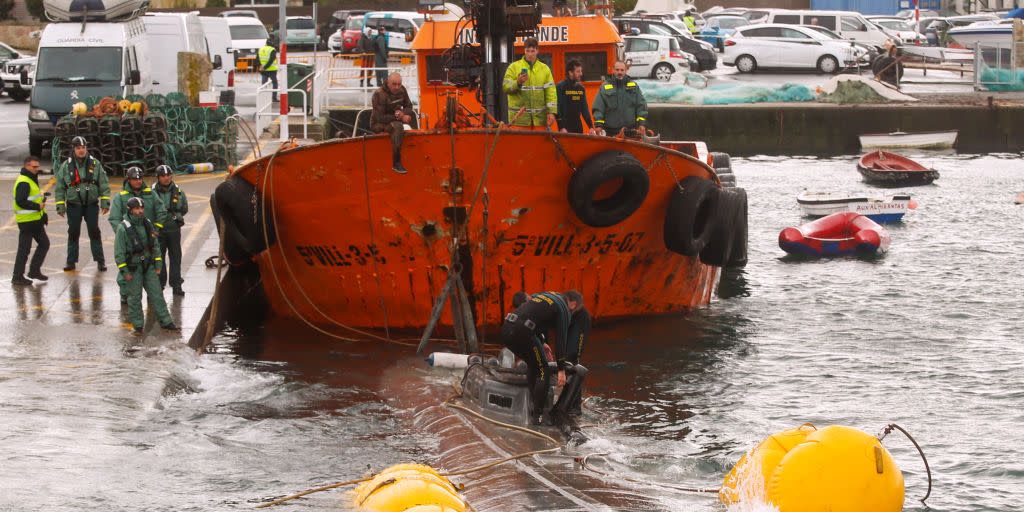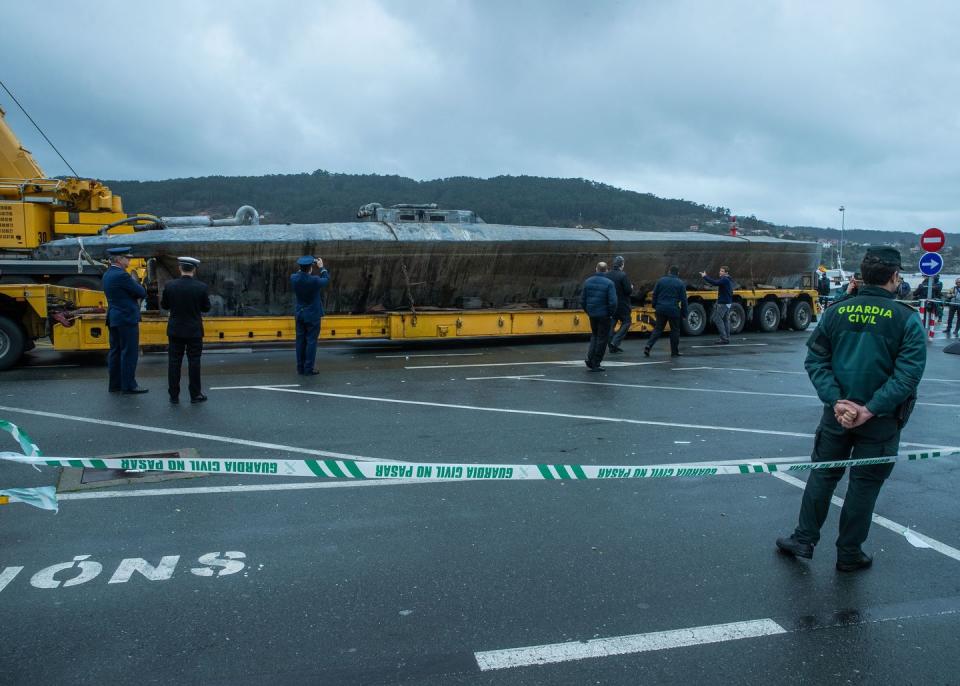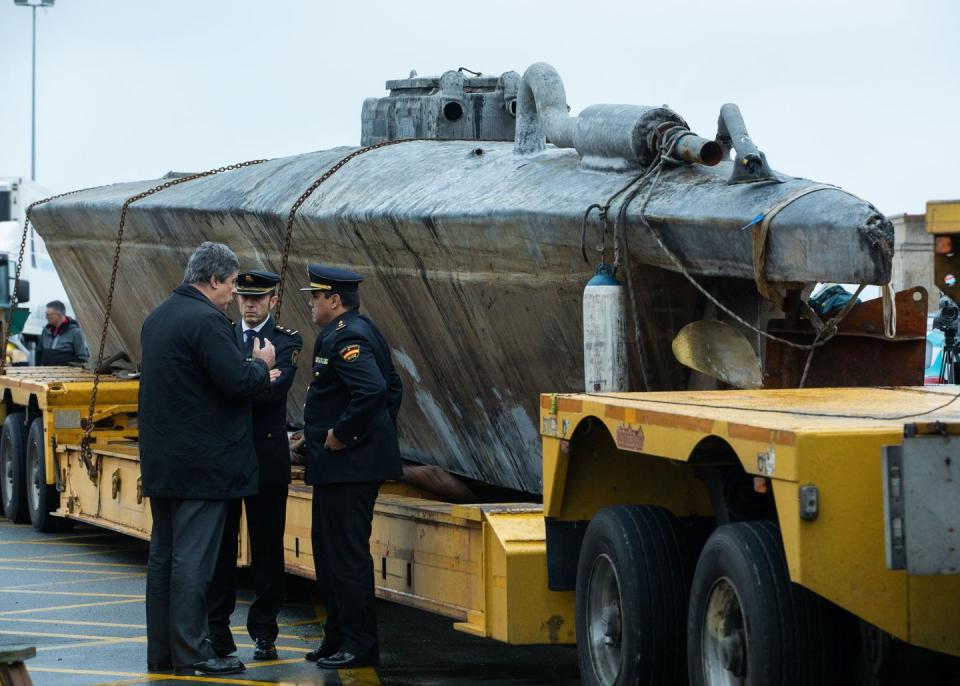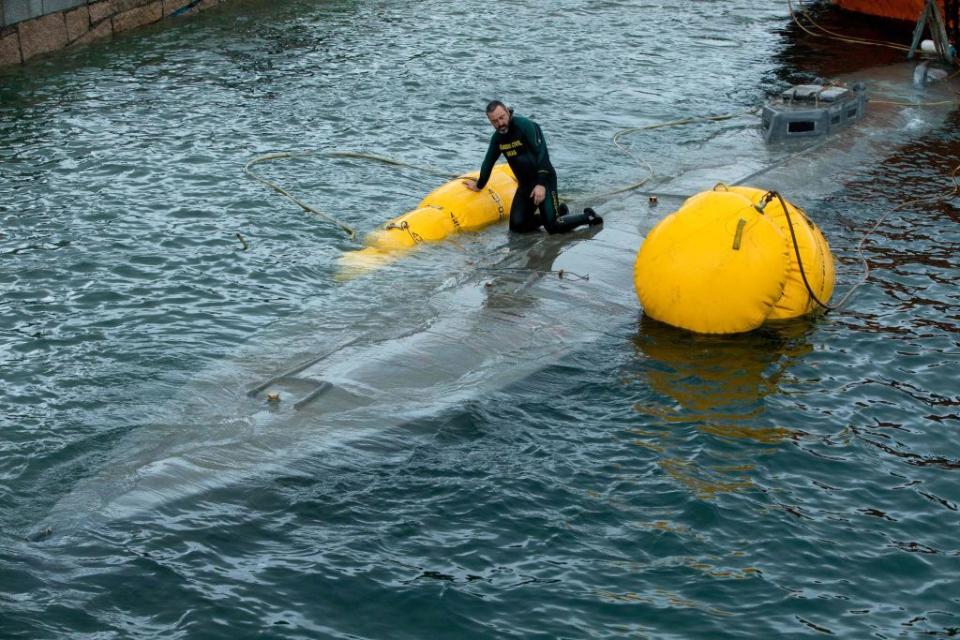Spain Captures First Known 'Narcosub' to Cross the Atlantic

Spanish police have commandeered the first known “narcosub” to make the trip from South America to Europe.
The submarine had just arrived off the coast of Spain, carrying more than $100 million in cocaine.
Narcosubs are used by cartels to move large amounts of drugs from South America to Mexico, but this is the first known to have traveled as far as Europe.
Spanish authorities have confiscated the first transatlantic “narcosubmarine” ever discovered by authorities. The vessel succeeded in crossing the Atlantic Ocean with more than $100 million in cocaine onboard. The ship is designed to elude discovery by military and law enforcement by presenting just a tiny silhouette on the surface.
The vessel was captured a mile offshore northwestern Spain after being caught in nets by Spanish authorities. Police received a tip from an “inter-governmental working group” about the ship’s presence, and tracked it down and captured on November 24. According to Navy Times, the working group consisted of law enforcement from Spain, Portugal, the U.S., the U.K., and Brazil.

Spanish police state that the narcosub was carrying a cargo of 6,613 pounds of cocaine divided into 152 bales. The estimated street value of the drugs is $110 million. Three crew members, all Ecuadorian nationals, were arrested while two other persons were arrested on shore in the Spanish town of Vigo.
The vessel is described as a 65-foot-long ship built of fiberglass. The vessel has a fully enclosed wheelhouse, allowing the pilot of the ship to see outside while remaining at the waterline level. The term “narcosubmarine” is actually a misnomer, as these types of ships are not built to submerge. Rather, they are meant to present as low a profile as possible in the water to elude detection. As submarine expert H.I. Sutton points out, the vehicles are technically “low profile vessels,” or LPVs.

LPVs are well-known in the Americas with ships frequently making the trip from Central or South America north to the east and west coasts of Mexico. From there, the drugs make their way over land to the U.S. and Canada. Many of these vessels have been intercepted over the years, growing more sophisticated with time. Some vessels are merely existing boats with their hulls enclosed, while others are purpose-built to rise barely above the wavetops. In July 2019, dramatic footage emerged of a boarding team from the U.S. Coast Guard cutter Munro leaping onto and then halting a narcosub in the Pacific Ocean.
According to H.I. Sutton, law enforcement officials have speculated for years that there might be narco subs plying a route between South America and Europe. Europe is a prime destination for cocaine, and the ability to send up to six tons of drugs directly to the continent, without the use of middlemen, is an attractive prospect for the drug cartels. The motive is certainly there.

The use of a narcosub to cross the Atlantic Ocean is a considerable accomplishment. The distance from northern Brazil to northern Spain is 3,800 miles, far longer than previously known smuggling routes. Navigation is probably done by satellite-based internet and GPS.
The transatlantic trip is dangerous, as the slow-moving vessels are unable to outrun storms and hurricanes and are not built to any known safety standard. The crew of a narcosub must stay out of existing shipping lanes, because their vessel is built not to be seen and does not transmit an AIS signal to broadcast its position to other ships. A 100,000-ton container ship will easily run down a LPV without seeing it. What’s more, a narcosub crew can’t exactly call the Coast Guard if a problem arises. For all we know there are narcosubs—and their crews—sitting on the bottom of the Atlantic, the victims of failed crossings.
Source: Navy Times
You Might Also Like

